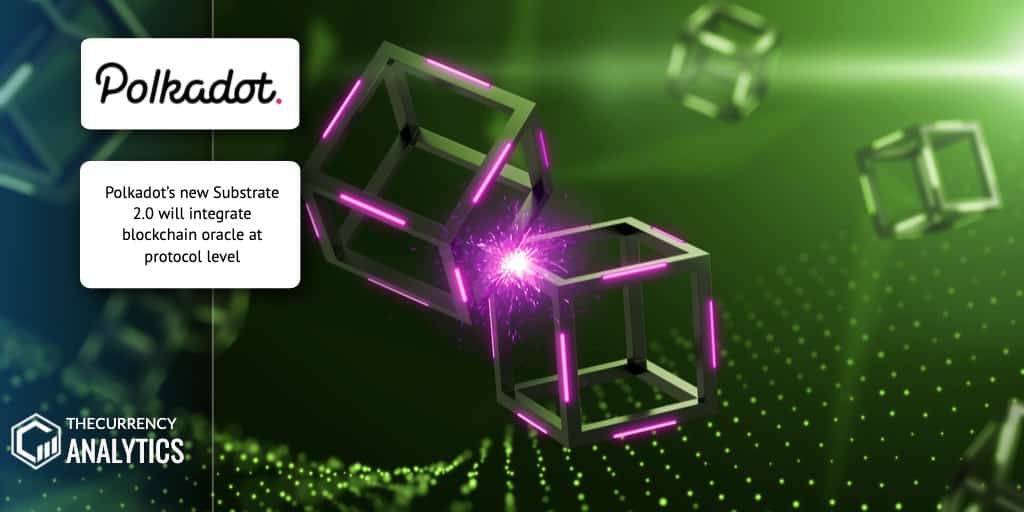
Polkadot is pleased to announce the release of its breakthrough Substrate blockchain system which will now enable blockchain apps to interact with the external world yet without reliance on off-chain oracle providers.
The new crypto platform Polkadot has been in the news since its inception. In fact, despite being a new entrant, Polkadot has reportedly experienced a 44% rise in developer activity while both Ethereum and Bitcoin witnessed declines.
Substrate refers to the blockchain building structure of the new crypto platform. It extends a wide range of tools to developers to help them design custom blockchain that can offer various possible applications. These custom blockchains could be launched as stand-alone platforms or else can be integrated into Parchains- Polkadot’s shared network.
The focal point of the state-of-the-art Substrate 2.0 system is “off-chain worker”. It can be defined as an advanced development module which allows blockchains to execute advanced computations and project their own requests to the off-chain (external) world.
Well, this major Substrate 2.0 feature is developed to empower Substrate nodes for performing a number of operations that are not viable for regular blockchains. For example, in Ethereum blockchain, a specific computation should be limited and fast enough to befit an instruction block. Such a process excludes several non-deterministic and complicated operations. But, Substrate 2.0 enables developers to get all these operations to nodes operating on a network so that they can perform tasks like – web requests, data signing, encryption & decryption as well as many such CPU-intensive tasks.
The system would enable Polkadot developer pros to create complex systems such as price-feed providers completely on-chain. In other words, developers would receive increased flexibility in designing their DApps as well as blockchains.
Now, it’s true that Polkadot Substrate’s off-chain workers would enable blockchain systems to project their own requests to the off-chain world, without depending on oracles. While it’s a major leap for the blockchain scene yet that doesn’t imply oracles will be losing out on importance soon. It’s because the recent Polkadot development cannot always guarantee the most authentic data as there could be problems in finding 100% credible data sources.
This is where oracles, especially decentralized oracles, come to help. Decentralized oracles source data from various sources which enable easy verification of the authenticity of data. One of the latest examples of decentralized oracles today is Bridge Oracle. It is the first ever dedicated public oracle for leading blockchain network TRON and is poised to serve smart contracts operating on TRON.
It’s to note here Bridge oracle promises authentic tamper-proof data, the most vital thing for smart contracts to operate at their optimum level for their use cases. The decentralized oracle sources information from various public data sources, like URL, Complex URL, Random, WolframAlpha and so on. Most importantly, it allows varied kinds of proof to testify to the authenticity of the injected data.
So, yes, the Substrate 2.0 is definitely a welcome move in the contemporary crypto world but oracles have their own stronghold which is hard to shake down.
Get the latest Crypto & Blockchain News in your inbox.